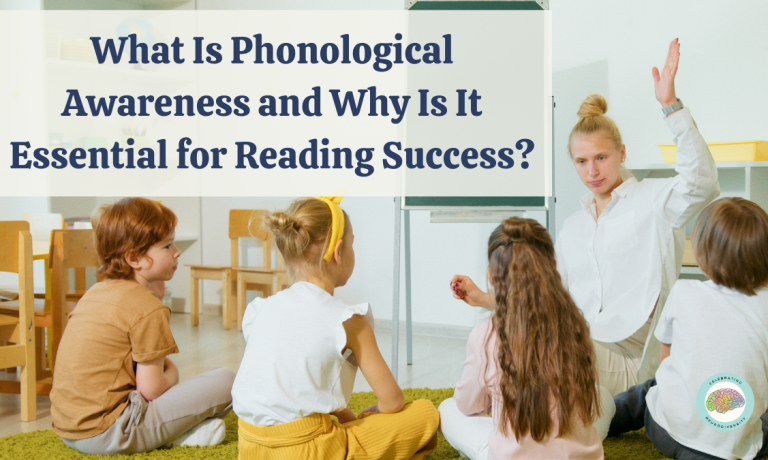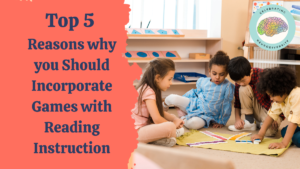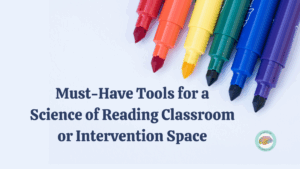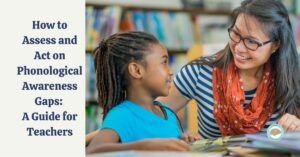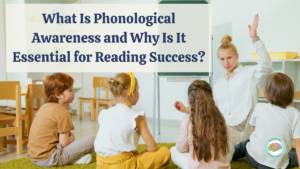If you teach reading or work with struggling readers, chances are you’ve heard about phonological awareness. But understanding what it really is, why it matters, and how to teach it effectively can make all the difference—especially for students with dyslexia or foundational reading gaps.
Let’s walk through everything you need to know to teach phonological awareness with confidence and purpose.
What Is Phonological Awareness?
Phonological awareness is the ability to recognize and work with the sounds of spoken language. It’s an umbrella term that includes a wide range of auditory skills:
- Hearing the number of words in a sentence
- Clapping syllables
- Identifying rhyming words
- Recognizing onset and rime (like /c/ + /at/)
- Blending and segmenting individual sounds (phonemes)
All of these skills are oral and auditory—no letters or print involved.
Think of phonological awareness as the “ear training” that comes before phonics. It helps children develop the mental framework for connecting sounds to letters later on.
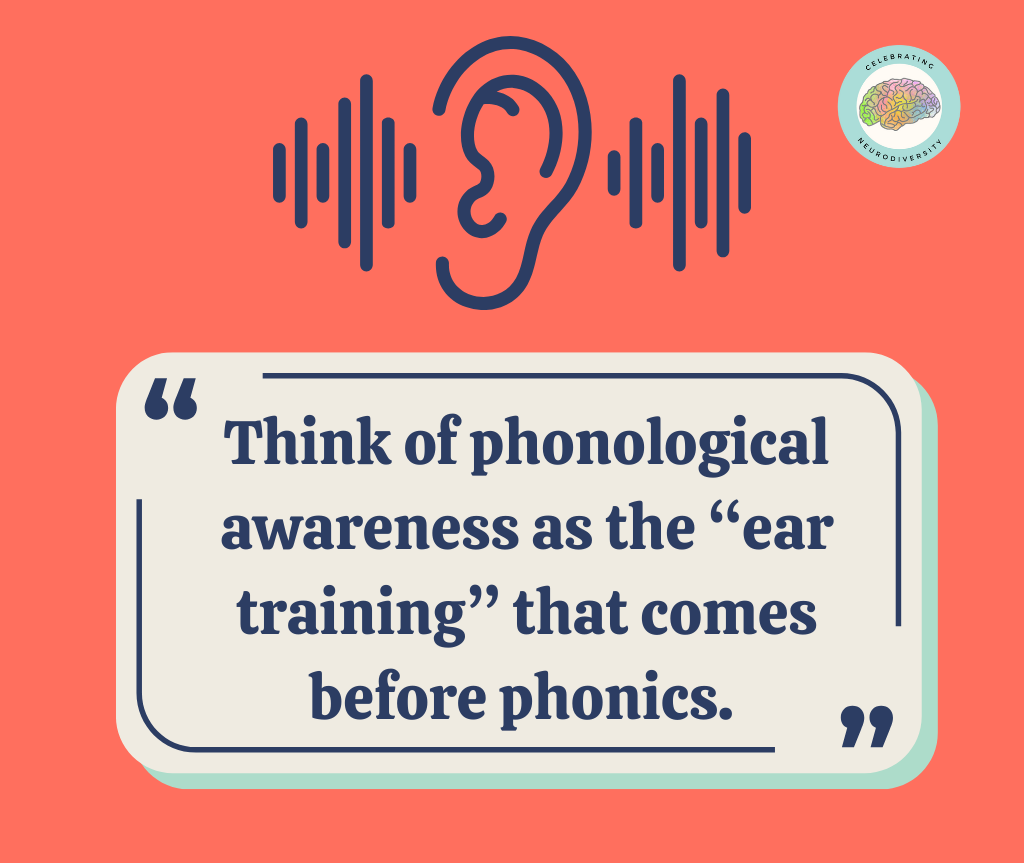
Why It Matters—Especially for Struggling Readers and Students with Dyslexia
Here’s what research shows:
- 88% of students with dyslexia have a phonological weakness (Shaywitz, 2003).
- Preschool phonological awareness predicts reading success in kindergarten and first grade (Anthony et al., 2007).
- Early instruction improves later outcomes—language and literacy skills improve with increased phonological awareness (Ball & Blachman, 1988; Gillon, 2004).
This means that if we’re not assessing or teaching these skills early and thoroughly, we risk missing the very kids who need the most help.
The Phonological Awareness Staircase: A Progression of Skills
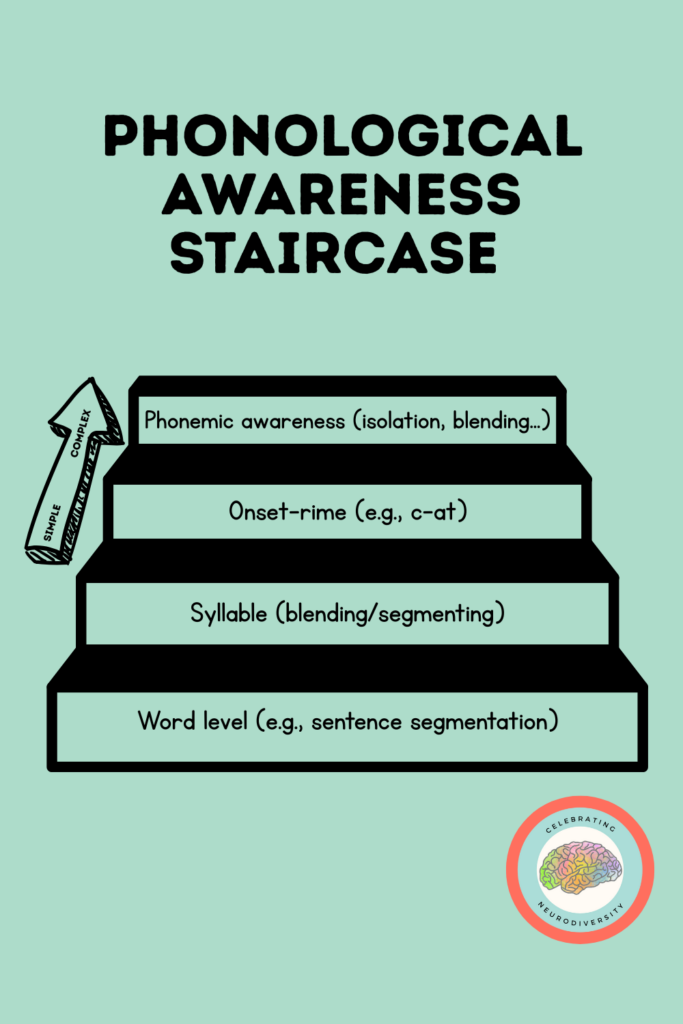
Think of phonological awareness like a staircase—from large chunks of sound to tiny pieces:
- Word Awareness – Can students hear the individual words in a sentence? Can they determine if two words rhyme? Can they recognize when words start with the same sound?
- Syllable Awareness – Can they clap or count the beats in a word?
- Onset-Rime Awareness – Can they separate the beginning sound from the end chunk?
- Phonemic Awareness – Can they hear, blend, segment, and manipulate individual sounds?
Each step builds on the last, and while we don’t need to teach in perfect sequence, we do need to scaffold intentionally and revisit skills often.
Inside Each Step: Definitions, Examples, and Activities
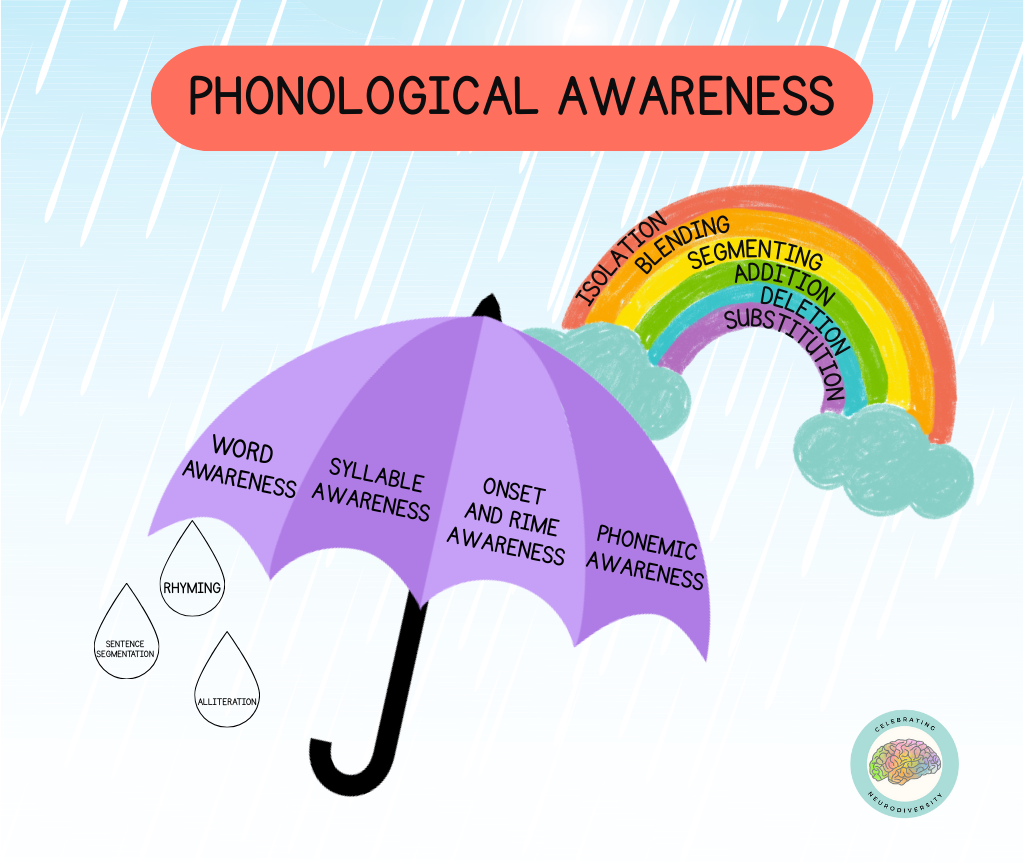
Word Awareness
Sentence Level
- Understanding that sentences are made of separate words.
- Try it: Jump, clap, or smash playdough for each word in a sentence.
Rhyming
- Recognizing sound patterns at the ends of words.
- Try it: “Do cat and hat rhyme?” or “Tell me a word that rhymes with dog.”
Alliteration
- Recognizing when words start with the same sound.
- Try it: “Do Sally and sun start with the same sound?” or “Can you think of two words that start with the same sound as ball?”
Syllable Awareness
- Breaking words into syllables or “beats” (e.g., pen-cil = 2).
- Try it: Clap, tap, or place a hand under the chin to feel the syllables drop.
Onset and Rime
- Dividing a word into the beginning sound and the remaining chunk (e.g., c-at).
- Try it: “/m/… /an/—what’s the word?” → man
Phonemic Awareness: The Rainbow of Sound
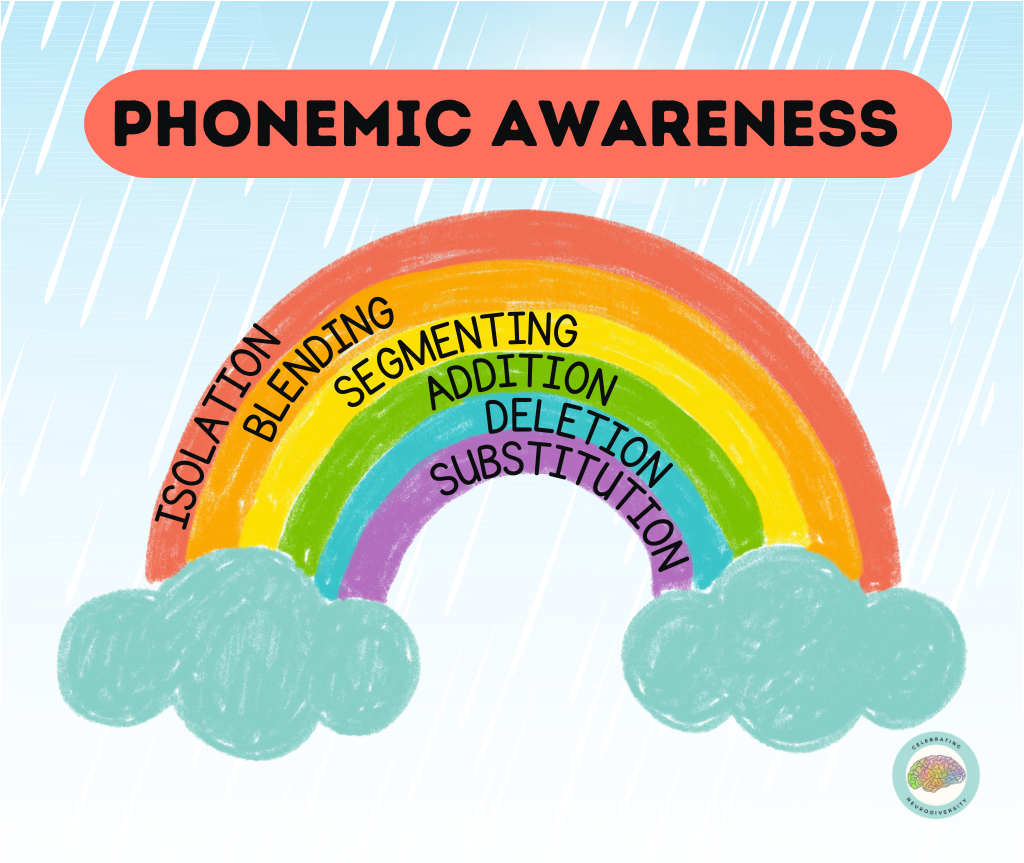
This top tier includes six key skills:
- Isolation – “What’s the first sound in dog?” → /d/
- Blending – “What word is /s/ /u/ /n/?” → sun
- Segmenting – “What sounds are in bat?” → /b/ /a/ /t/
- Addition – “Say at. Add /c/.” → cat
- Deletion – “Say stop without the /s/.” → top
- Substitution – “Change the /h/ in hat to /m/.” → mat
Use gestures (like tapping shoulder-elbow-wrist) and movement or visuals like tiles and Elkonin boxes to help students locate where the sound is in a word.
Assessment and Instruction Tips
Use Strong Assessments
- Heggerty Assessments – Great for classroom screening and tracking progress.
- PAST (Phonological Awareness Screening Test) – Ideal for deeper diagnostic insight and Tier 2/3
Pro tip: Don’t rely solely on segmentation. Some kids can break words apart but struggle with manipulation—these are the students most likely to fall through the cracks.
Teach Daily with Short, Focused Routines:
- Warm-ups, transitions, and small group times are perfect opportunities.
- 5–10 minutes a day can yield major gains in reading readiness.
- Use beads, cubes, themed erasers, or even body movements for multisensory practice.
Supporting Your Students Starts Here
All children who learn to read successfully develop phonological awareness. They understand that:
- Spoken words can be broken into sounds.
- Written words represent those sounds with letters.
- Every sound has a place and purpose in our alphabetic system.
When we build those bridges between speech and print, we don’t just teach students how to read—we build brains that read.

Ready to Take Action?
If you’re ready to bring structured phonological awareness instruction into your classroom or intervention groups, here are a few powerful (and free!) resources to get you started:
Free Resource Library
Download tools like the Rainbow Phonological Awareness Visual with explanation, sound mapping mats, and other engaging, kid-tested activities to support your students’ reading success.
👉 Click here to get access
Florida Center for Reading Research (FCRR)
Explore a wide variety of free student center activities organized by grade level and skill—including games and hands-on tasks for phonological and phonemic awareness.
👉 Find activities here
The Six Shifts – Phonemic Awareness Skills Development Tools
This ready-to-use resource includes word lists, language prompts, and a clear skill progression to guide instruction and intervention. It’s great for K–2 teachers working on cohesive phonemic awareness instruction.
👉 Download the tools here
Related Read: Why Is Teaching Speech Sounds Important to Reading Development?
Understanding speech sound awareness lays the foundation for phonological instruction. Learn how this critical step impacts decoding, spelling, and reading success.
👉 Read the full post here
Let’s keep building readers—one sound at a time. 💛
Have questions? Want to share what’s working in your classroom? I’d love to hear from you! Drop a comment or email me directly. Let’s grow together.

